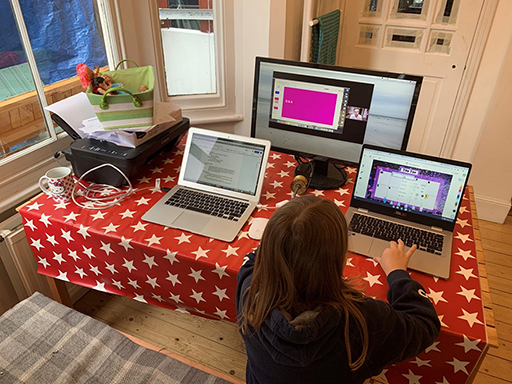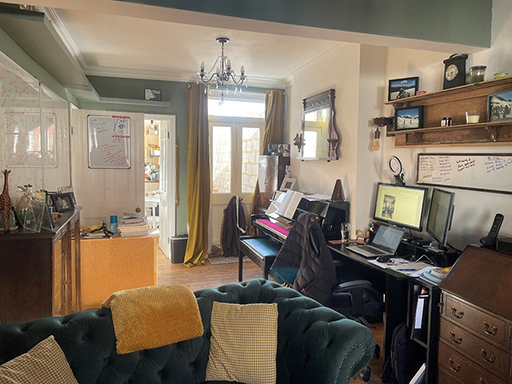3 Your ‘remote’ environment
In this section we consider your physical working environment. If you have had to change to remote working, you may not previously have had a space you can use solely for work. Maybe you have had to adjust your home environment and were working on the premise that it was going to be temporary. Now that most organisations are planning to continue hybrid working, it is a good time to consider reviewing how you work in your remote location.
Activity 9 Review your remote environment
If your organisation provides a display screen assessment (DSE assessment), consider doing one again, as this can help you think about how you are working and what support you may require. The webpages Health Working safely with display screen equipment | Health and Safety Executive [Tip: hold Ctrl and click a link to open it in a new tab. (Hide tip)] provide an overview of DSE assessments.
While many of us have to work where we can when working remotely – for example, at home, in an office space or a coffee shop – consider what small improvements you can make, especially for communication and collaborating. Think about your background when you are in meetings and whether your equipment is suitable for your role. (We cover setting up your equipment for online meetings later in the course.)
You may wish to make some notes below.
Feedback
You may have identified the following:
- Physical space – Do you have dedicated space at home?
- Background – What’s behind you that people might see?
- Equipment – Do you have all the equipment you need, for example, technology, desk, chair?
- Comfort – Temperature, DSE, noise levels?
- Safety – Is your equipment safe from a health and safety point of view, for example, trailing wires, plugs, and so on?
- Security – Can you lock anything confidential away?
During the COVID-19 lockdown, I eventually adjusted my remote working environment and made the decision to create a dedicated space. Below you can see the before and after.
Initially, I used to work with just a laptop at my kitchen table, with my daughter trying to home-school. Where appropriate, I had one-to-ones (1:1s) with colleagues who didn’t mind her being about during calls, and the eagle-eyed of you may see that we were living through an ongoing renovation project. At the end of the day, everything had to be packed up so we could have dinner together.
Now I have created a proper environment for working. It’s in my living room, but I have converted part of it into an office space and made a desk out of old loft boards and the best buy in lockdown – white boards! For my own wellbeing the whiteboards transformed how I worked: I get to stand up, move around and quickly work through problems, as I often struggle with online whiteboards.
I do have one home-working rule. When I finish work for the day, I put my laptop out of sight. This not only ensures that I have switched everything off, which helps reduce my carbon footprint, but it helps me mentally block out the ‘office’ area when I am in my living room and not working.


